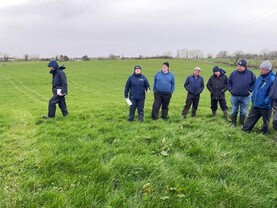Over the next week or so, farmers that have not already housed their cows fulltime will begin to do so.
Decisions around when to house will be driven by grazing conditions, weather and grass availability. Some farmers will continue to graze by day and house by night.
This system suits situations where perhaps housing is inadequate or not all in the one yard. The only thing to be aware of in this situation is the risk of reducing average farm cover down too low, or stripping body condition score off cows by doing long walks on wet roadways.
Drying off
Where cows are housed there are a number of things to be considered. The first is drying off first lactation cows and early calvers. First lactation cows should get 10 to 12 weeks dry and mature cows will need a minimum of eight weeks dry.
The second thing to keep an eye on is silage quality. Milkers won’t milk well off low quality silage so that is something that needs to be kept in mind. But equally, don’t use up all the good quality silage at the expense of having no silage for milkers next spring.
The third thing is meal feeding rates and the type of meal. How much meal to feed should depend on silage quality and on how much the cows are milking.
The latter is a chicken and egg situation, feed more meal and cows will milk more and require more meal.
In my view, feeding any more than 3kg of meal to a cow in late lactation on fairly decent quality silage is questionable. The returns from meal feeding are often over-played.
I would suggest that feeding a low level of meal will be more profitable in late lactation than feeding higher levels. Remember, profit doesn’t necessarily follow production. So, production for the sake of production is just vanity.
Finally, on meal type, if late lactation cows are housed fulltime a 16% protein nut is probably more appropriate than a 12 or 14% nut.






 This is a subscriber-only article
This is a subscriber-only article









SHARING OPTIONS: